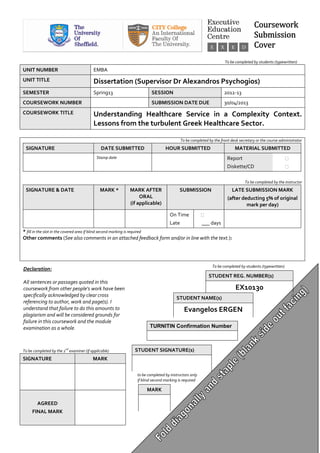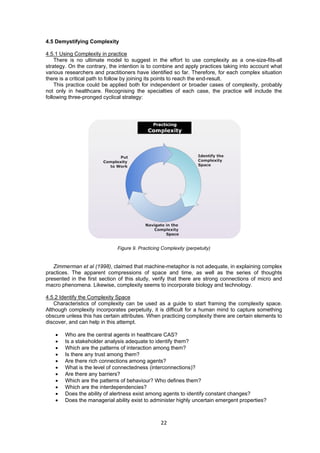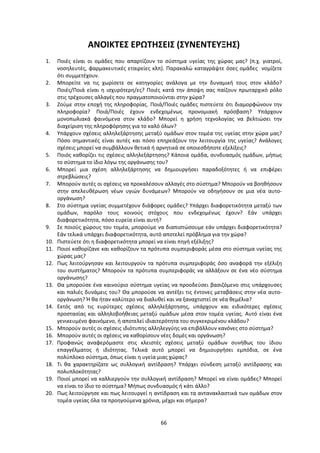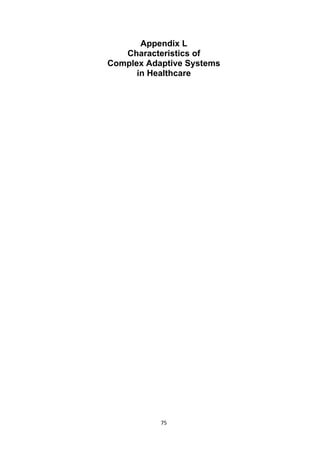This document is a cover page for a dissertation submitted by Evangelos Ergen to his supervisor Dr. Alexandros Psychogios at the International Faculty of the University. The dissertation is titled "Understanding Healthcare Service in a Complexity Context. Lessons from the turbulent Greek Healthcare Sector." The cover page provides information on the student, dissertation title, supervisor, submission date, and includes spaces for signatures and marks from the instructor and second examiner. It also contains a student declaration regarding originality and attribution of work.























































































































